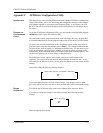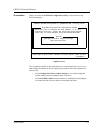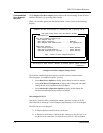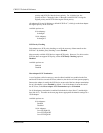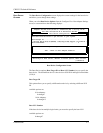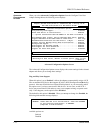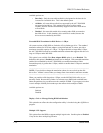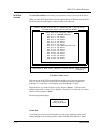
CBI/CGI Technical Reference
Chassis Plans C-9
The Initiate Sync Negotiation setting determines whether the adapter initiates
synchronous negotiation with the SCSI device. If this option is set to the default setting
of Yes , the adapter initiates synchronous negotiation with the SCSI device. Normally,
you should leave this option set to Yes, because most SCSI devices support synchronous
negotiation, which allows for faster data transfer. If a device does not support
synchronous negotiation, the adapter automatically transfers the data in asynchronous
mode.
If you change the setting to No, the adapter does not initiate synchronous negotiation;
however, the adapter always responds to synchronous negotiation if the SCSI device
initiates it. If neither the adapter nor the SCSI device negotiates for synchronous data
transfers, data is transferred in asynchronous mode.
Available options are:
Yes
No
Maximum Sync Transfer Rate
This setting determines the maximum synchronous data transfer rate that the adapter will
negotiate with the device. The adapter automatically negotiates for the rate requested by
the device. The allowable maximum rates are in megabytes.
If the adapter is set not to negotiate for synchronous data transfer (i.e., if the Initiate
Sync Negotiation option is set to No), the value selected here is the maximum rate at
which the adapter accepts data from the device during negotiation. This is standard SCSI
protocol.
If the Support for Ultra SCSI Speed option on the Advanced Configuration Options
screen is disabled, the only values available for maximum sync transfer rate are those for
8-bit adapters (see below); in this case, the default is 20.0. If Support for Ultra SCSI
Speed is enabled, the values for 16-bit adapters are available and the default is 40.0.
Available options are:
8-bit Adapters:
20.0
16.0
13.4
10.0
16-bit Adapters:
40.0
32.0
26.8
20.0
Enable Disconnection
This setting determines whether the adapter allows a SCSI device to disconnect from the
SCSI bus (sometimes called Disconnect/Reconnect). Enabling disconnection allows the



